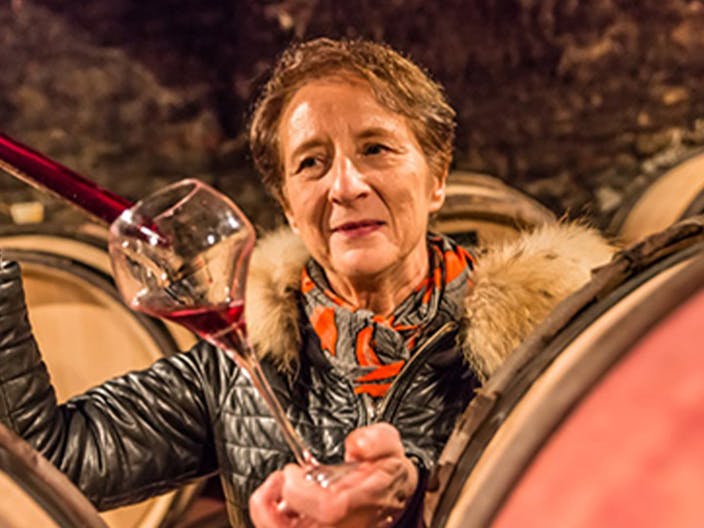In the vineyard
The vineyards have been certified organic since 2013, with no chemicals used on the vineyards since 2005.
All the vineyards are planted at a high density of 10,000 vines per hectare. During the growing season, they reduce the grape clusters to seven to eight bunches per vine and do a green harvest in August, keeping only the healthiest bunches.
The estate has four Grand Crus (Clos de Vougeot, Charmes-Chambertin, Mazis-Chambertin and Chambertin). Chantal believes the best way to describe the profile of these four Grands Crus is to think of Chambertin as the father, serious and brooding but complex.
Mazis-Chambertin is the son, sharing Chambertin’s profile, but with more vitality; while Charmes-Chambertin is the daughter with more elegance and finesse; and Clos de Vougeot is the brother who joined the church – serious, pious and scholarly.
They also produce five Premiers Crus (two in Gevrey-Chambertin, two in Morey-Saint-Denis and one in Chambolle-Musigny). They produce four different village Gevrey-Chambertin cuvées.
In the winery
Most of the fruit is de-stemmed, with 25% fermented whole-bunch. The latter was introduced to counter the lower acidities with the region’s warming climate; while whole-bunch fermentation technically reduces acidity, it adds a sense of freshness thanks to the mineral salts.
The grapes are then chilled down to 10˚C for a week-long cold soak; this increases aromatic complexity, but also allows Chantal to get all the grapes in before fermentations start, meaning she’ll have complete control over this critical stage. Chantal uses a pneumatic press to extract the juice very gently, minimising the amount of lees in the must as this reduces the need to rack once in barrel.
The Premier Cru wines undergo a 12 to 14-month élevage, although in recent warmer vintages this has been shortened. Decisions are made by tasting, with the wines racked out of barrel when the first hint of bitterness is felt in the wine. The Grands Crus are typically aged for longer and see 50% new oak, with 80% new for Chambertin Grand Cru. For Chantal, barrel maturation is essential for stabilisation of the wine rather than flavour. The oak barrels act as a natural filter and this allows them to bottle directly from cask.
